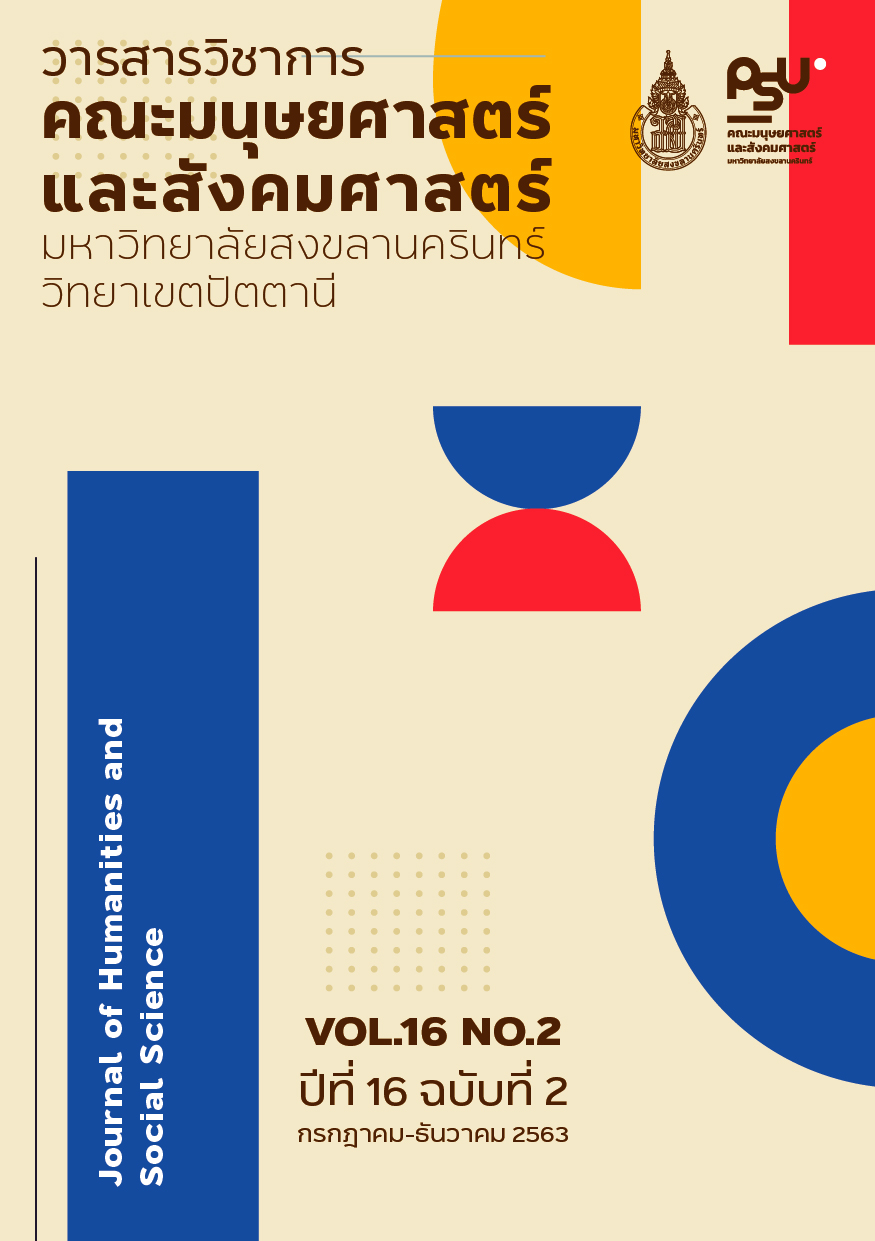The Expenditure on Wellness Tourism of Tourists Travelling in Betong District, Yala Province
Keywords:
Wellness Tourism, Betong, Expenditure, Multiple Linear Regression ModelAbstract
Currently, wellness tourism gains popularity among tourists. Moreover, Betong district in Yala province is an area that has the potential to be wellness destination. Therefore, the objective of this research is to estimate the expected expenditure on wellness services of tourists traveling to Betong District by applying multiple linear regression model. The result showed that the wellness services which have more proportions in tourists’ expenditure are 1) trekking, biking and sightseeing 2) visiting Betong hot spring 3) visiting archaeological sites and community-based tourism and 4) traditional massage service, respectively. The average expected expenditure on overall wellness services are 2,587.8 baht per person per trip. In addition, the average expected expenditure of Malaysian tourists is 2,745.5 baht per person per trip, much more than the expected expenditure of Thai tourists which is 2,114.7 baht per person per trip. The multivariate regression model found that the significant factors that effects the expected expenditures include nationality, age, religion, education level, occupation, monthly Income, information about tourism destination, how to travel, accommodation, cost for overall trip, experience on wellness tourism and utilizing wellness tourism services in Betong. Since the expected expenditure of Malaysian tourist is higher than the expected expenditure of Thais. Consequently, the wellness tourism service should be focus on the demand of Malaysian tourists as the first priority.
References
2.กฤษดา อุดมสุข และลีลา เตี้ยงสูงเนิน. (2561). ปัจจัยที่ส่งผลต่อพฤติกรรมการซื้อของนักท่องเที่ยวชาวอาเซียนในประเทศไทย, วารสารสุทธิปริทัศน์. 32(103), 107-118.
3.กรมการค้าระหว่างประเทศ. (2563). สถิติการค้าชายแดนผ่านแดน ปี 2561-2563 (ม.ค.-มิ.ย.). สืบค้น 3 กันยายน 2563 จาก https://www.dft.go.th/bts/show-detail-bts/ArticleId/15907/-2561-2563-1
4.ปวรพัชร รัตน์รุ่งเรืองยศ และรุ่งระวี วีระเวสส์. (2559). ปัจจัยที่กำหนดอุปสงค์การท่องเที่ยวในประเทศไทย ของนักท่องเที่ยวชาวต่างชาติ, วารสารศึกษาศาสตร์ มหาวิทยาลัยศิลปากร. 13(2), 158-166.
5.มิ่งสรรพ์ ขาวสอาด อัครพงศ์ อั้นทอง, พรทิพย์ เธียรธีรวิทย์, กุลดา เพ็ชรวรุณ และนุกูล เครือฟู. (2556) เศรษฐศาสตร์ว่าด้วยการท่องเที่ยว. เชียงใหม่: สถาบันศึกษานโยบายสาธารณะ มหาวิทยาลัยเชียงใหม่.
6.สำนักงานปลัด กระทรวงการท่องเที่ยวและกีฬา. (2559). รายงานภาวะเศรษฐกิจการท่องเที่ยว Tourism Economic Review. สืบค้น 6 ธันวาคม 2561, จาก https://www.mots.go.th/ewt_dl_link.php?nid=762
7.Breidert, C., Hahsler, M., & Reutterer, T. (2006). A Review of Methods for Measuring Willingness-to-Pay. Innovative Marketing, 2(4), 8-32
8.Global Wellness Institute (2018), Global Wellness Tourism Economy, November 2018 สืบค้นเมื่อ 21 พฤศจิกายน 2562 จาก https://globalwellnessinstitute.org/wp-content/uploads/2018/11/
GWI_GlobalWellnessTourismEconomyReport.pdf
Downloads
Published
How to Cite
Issue
Section
License
บทความนี้ได้รับการตีพิมพ์เป็นของวารสารวิชาการคณะมนุษยศาสตร์และสังคมศาสตร์ คณะมนุษยศาสตร์และสังคมศาสตร์ มหาวิทยาลัยสงขลานครินทร์ วิทยาเขตปัตตานี






